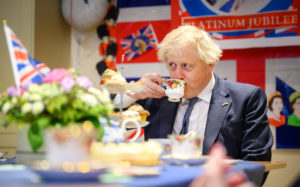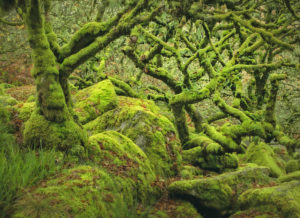There’s something about the great outdoors that features heavily in childhood memories, regardless of generation. Perhaps it’s the novelty of a place that isn’t so familiar as the four walls of home. Perhaps it’s sensual — the rough, knowledgeable texture of tree bark, the intoxicating scent of nature’s perfumes, or the piquant, autumnal taste of a swollen, sour blackberry.
Or perhaps it’s the danger of freedom. The thrill of becoming lost. The imperfections of nature that cannot offer complete, bubble-wrapped security and comfort. But wherever imperfection exists, there is someone out there to sell you the dream. Why submit to the chaotic, beautiful imperfections of nature, when you can have a “forever flawless” artificial lawn?
Advertised by their promoters as the perfect solution to gardens bronzed by the unrelenting warmth of climate change, time spent outside mowing and weeding, burn marks from pet urine, and dirty shoes, the artificial lawn market has expanded rapidly in the last decade. There is money to be made — with industry forecasters predicting that global demand for artificial lawn will reach $7 billion by 2025. They’re not cheap either — Which? magazine advises that a fake lawn is comparatively expensive, especially if landscapers or specialists are employed for its installation, which is important for preventing visible seams, wrinkles and having a properly fitted underlay: “The prices quoted for fitting a 50m² area ranged from £1,000 to £2,700 — double the price of the artificial grass alone.”
So what is the appeal of artificial grass, and why is this such a rapidly expanding industry? Clues are abundant in marketing pitches for the product, citing low maintenance burdens and year-round “flawless” green lawn. One advert for New Lawn promises to “give your family the perfect, safe and mud-free garden year round”.
But this vision of perfection is, frankly, chilling. Can you imagine any child delighting in the artificial crunch of plastic under their feet over the sensory stimulation of real, natural grass in its resplendent, fragrant verdancy? Artificial lawn gardens are fundamentally sterile. The removal of nature goes well beyond the blades of grass. To install outdoor carpet, plastic membranes must be laid down to ensure that plants are unable to take root and grow among the artificial fibres. This means no clover, no buttercups, no daisies. None of the invertebrates and other insects that feed on pollen and decomposing matter. No birds, either — what are they to feed upon in this barren wasteland?
Perfect Grass Ltd. offers this dystopian advice for preventing the simple pleasure of watching birds enjoy a source of food during a long, cold winter: “Keep bird feeders well away from your artificial grass. These will only encourage droppings to build up and rodents to dig at the grass below the feeder.” Grim. The desert conditions persist below ground too — without a source of grass cuttings and other organic matter breaking down into the soil, detritivores like earthworms are starved too. Instead of decomposing humic matter and aerating the soil, without food, they themselves decompose. And deprived of oxygen, the conditions underfoot offer forth the foul odours of the anaerobic rot of whatever organic matter remains, often amplified by pet urine, a known problem for artificial grass.
But worry not, the purveyors of perfection have another solution: chemicals. We’re not just talking about vinegar, washing up liquid and detergents, soaking into the groundwater. There are companies out there to sell you the smell of real grass for your fake grass. Perfect Grass offers this advice for brushing perfume into your plastic:
“If you want your artificial grass to smell like the real thing then add some artificial grass cleaner to it and brush it in… This compound is a colourless liquid that has an intense smell of freshly cut grass. Mixed with other ingredients and bingo – you are able to deliver that freshly cut grass smell.”
But it’s not all heavenly in plastic paradise. The very same website advises against using lawn fragrance to mask odours that are inherent to artificial grass: “We don’t recommend using these products to cover up the smell of dog wee for example, as we have found it results in a “dog wee grass smell”. It is best used like a perfume; you wouldn’t apply perfume or aftershave without washing first!”
Avoiding maintenance is said to be one of the key advantages of artificial lawns. Yet here again the dream is a failed one. If they are to fulfil their promise of perfection, outdoor carpets require vacuuming to remove debris such as leaves, blossom and twigs. The fibres also require regular agitation to remain firm and upright. Many of the outdoor vacuum cleaners for this purpose (such as the “Lazybrush”) even bear a striking resemblance to… a lawnmower.
Even regular brushing and vacuuming in colder, wetter climates will not be enough to prevent the build-up of moss and moulds, which darken the lawn, break down the plastic fibres and end the fake perfection. Again, artificial lawn chemicals can come to the rescue — or, if all else fails, you can pressure wash your plastic grass clean again. In the summer, moss and mould give way to intense heat, because artificial lawns absorb and radiate much more heat than natural grass. Aura Landscapes tested this with an infrared thermometer, finding that artificial grass in the sun reached over 60ºC — enough to cause thermal burns to human skin.
So, given how awful artificial lawn is, how easy is it to dispose of it? In fact, artificial lawns dispose of themselves, shedding mass as microplastics into the air and watercourse. Research on microplastic emissions from domestic artificial lawn is limited, but playing-field astroturf has been estimated to be the second-largest source of microplastics in the environment after road wear and tyre abrasion. The remainder, once it reaches the end of its useful life of potentially less than ten years, is very hard to recycle, owing to the sheer variety of polymers involved to achieve the “right” texture, ultraviolet light resistance, colour and general durability. Thus, it ends up in landfill.
Already, hundreds of fields that were installed in the mid-2000s in the US are at or beyond their estimated eight-to-10-year life spans. Now these fields are being torn up, en masse. In one 2017 report, the Synthetic Turf Council projected that by the end of the decade, at least 750 fields will be replaced annually. The average field contains approximately 18 tonnes of plastic carpet and 18 tonnes of infill, according to the report. This means that as much as 150,000 tonnes of waste could require disposal every year. The problem is not unique to North America — one Dutch report on how artificial turf is disposed of at the end of its useful life found that recycling facilities often do not follow through with their promises, either taking the money and storing the turf instead of recycling it in reasonable time, or even selling it abroad. Storing large volumes of flammable plastic and rubber is inherently risky, too. The very same facility featured in the Dutch report later suffered a large fire, which took days to put out, releasing toxic fumes into the air.
All of the above said, the most fundamental reason to despise artificial lawns, is that they look shit. Tacky, lifeless green carpets don’t look like a perfect lawn; they look like what they are — as fake, plasticky, and artificial as an American newsreader. Outdoor carpet follows the “uncanny valley” model of emotional response to likenesses. That is to say, it looks unnatural and dystopian precisely because it is so close to, and yet so far from, the natural thing it is trying to emulate. Artificial lawn installation companies often share before and after comparisons: before, the perfect imperfection of nature — a garden habitat for invertebrates, hedgehogs, insects and birds; after, a sterile, fake perfection — devoid of variation, devoid of life. Fake turf is the manifestation of a deep cultural weakness, expressed in short-termism and a distaste and disrespect for the wonder, variety, and temporality of the natural world. Artificial lawns are the “Live, Laugh, Lobotomy” of gardening.
It’s time to go to war against plastic turf. Some municipalities already are: Boston has banned artificial lawn in its city parks. Professional societies are also weighing in — the Royal Horticultural Society (RHS) recently declared: “We launched our sustainability strategy last year and fake grass is just not in line with our ethos and views on plastic. We recommend using real grass because of its environmental benefits, which include supporting wildlife, mitigating flooding and cooling the environment.” The RHS’s flagship event, the Chelsea Flower Show, introduced a ban for artificial grass in 2022.
Even if we can’t ban it nationwide, surely the civic minded among us can take the initiative in filling watering cans with acetone and paying a visit to our dear neighbours’ artificial lawns? And if that doesn’t take your fancy, do what you can. If you move somewhere with one, or if you have one already — rip it out, and restore the hum, buzz and chaotic beauty of nature to your surrounds. The planet will thank you, and so will your discerning neighbours.
***
An unabridged, illustrated version of this article first appeared on the writer’s Himbonomics substack.
Disclaimer
Some of the posts we share are controversial and we do not necessarily agree with them in the whole extend. Sometimes we agree with the content or part of it but we do not agree with the narration or language. Nevertheless we find them somehow interesting, valuable and/or informative or we share them, because we strongly believe in freedom of speech, free press and journalism. We strongly encourage you to have a critical approach to all the content, do your own research and analysis to build your own opinion.
We would be glad to have your feedback.
Source: UnHerd Read the original article here: https://unherd.com/





